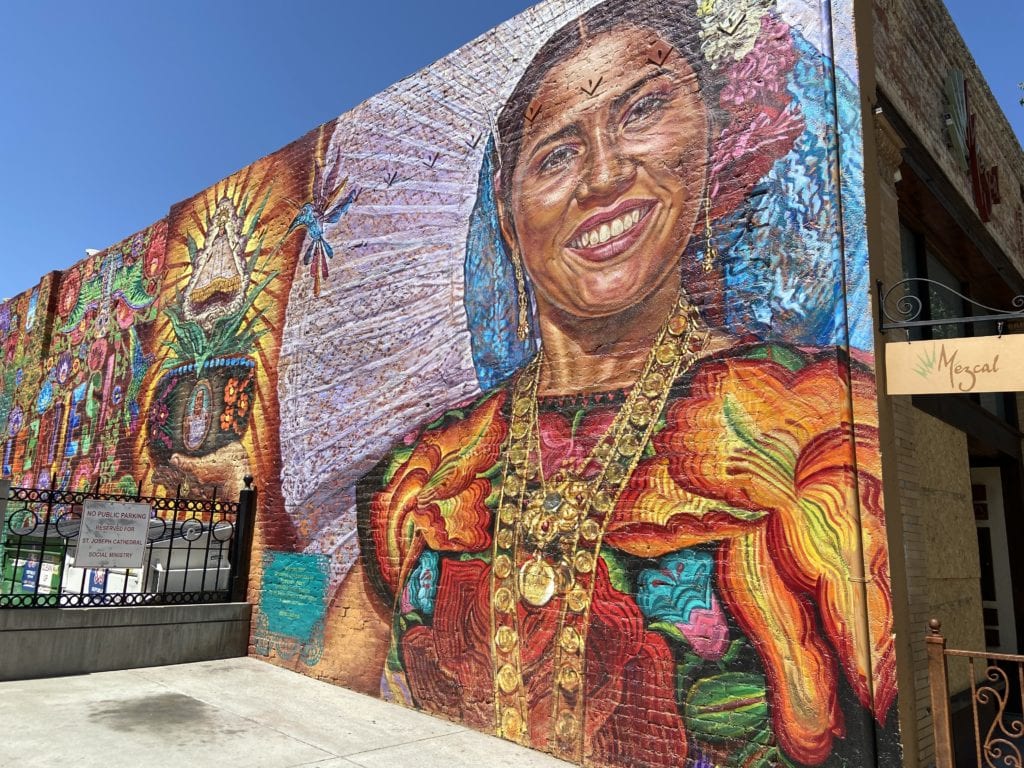San Jose creatives want more funding for the arts—and they are turning to the city for help.
San Jose Arts Advocates, a coalition of art and culture leaders, is asking city officials to move forward on applying a “percent for art policy” on new development to fund art and culture projects. The coalition held a meeting Thursday to prepare for a city council arts funding study session on Nov. 30.
The city council first broached the idea in 2007 with a goal to implement it by 2020, but it didn’t happen. In 2020, just a month before the COVID-19 pandemic hit, six councilmembers approved of the fee creation as one of the city’s top priorities. But priorities shifted during the pandemic. The hospitality sector collapsed and revenue from a tax charged to hotel guests—the city’s main funding for art projects—plummeted.
Brendan Rawson, executive director of San Jose Jazz and a founding member of San Jose Arts Advocates, said reconsidering arts and culture funding mechanisms is necessary to improve the downtown and quality of life in general.
“Things have changed, particularly the downtown economy,” Rawson said. “There are fewer large conventions coming to town, much less business travel from Monday through Friday and other things that fill hotel rooms.”
Fifty percent of the hotel tax revenue goes to the general fund. The other half goes into a fund that subsidizes the city’s Convention and Visitors Bureau, operations of Team San Jose and the Office of Cultural Affairs.
Though tourism is slowly bouncing back, advocates are stressing the need to create other funding tools so art can flourish without delays. Rawson said according to the city’s five-year budget projection, the hotel tax was approximately $27.5 million at the end of fiscal year 2023. In 2019, it was $51.3 million—drop of more than 46%.

It’s unclear how much the art fee would generate. The most prevalent art-based fee program requires a developer to pay 1% of a building permit valuation or make an in-lieu payment, according to a 2009 consultant report to the city council.
Advocates are also asking the city to consider allocating 40% of the hotel tax collected to create art spaces. Another idea is to encourage the city to explore creating a “quality of life” ballot measure to collect taxes for libraries, community centers, art and culture spaces.
Sunnyvale has had such a fee in place for more than 30 years and Santa Cruz is in the beginning stages of creating a similar tax.
A San Jose spokesperson did not respond to a question about how much revenue an art fee could generate.
Peter Allen, a founding member of San Jose Arts Advocates, said with a new council, it will be a heavier lift to get the fee passed, especially because developers are already overwhelmed by a variety of fees.
“This fee is not going to be the make or break element of any project,” Allen told San José Spotlight. “This should not be seen as a burden, but a benefit that would make their projects frankly more viable and desirable.”
Allen said there’s no better time to implement it. With more than 127 housing, commercial and office developments underway in San Jose, the city could stand to fill its arts and culture coin purse with millions of dollars.
In the last decade, the city has invested millions to liven its public art scene—especially in the downtown core. The city sets aside 1% of its capital improvement project budget for the commission, purchase and installation of artworks. This has generated $2.4 million to be applied to art projects over the next four years.
Contact Jana at [email protected] or follow @Jana_Kadah on X, formerly known as Twitter.
